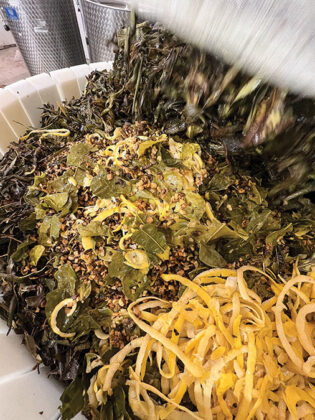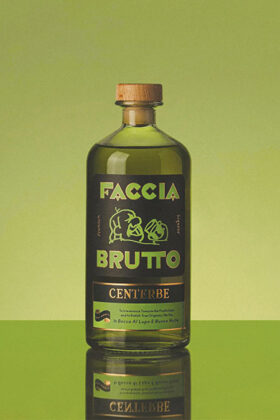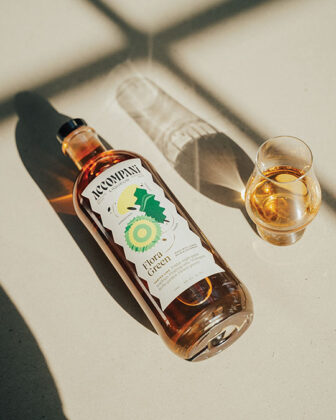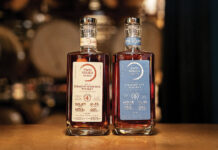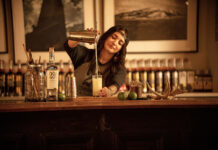Earlier this year, the internet exploded over news that the Carthusian monks who have been making Chartreuse in its current form since 1840 were putting a ceiling on their production. In a short letter they noted that they had made this decision in 2021 in order to “protect their monastic life and devote their time to solitude and prayer.”
Paul Einbund knows all about Chartreuse. His restaurant, The Morris in San Francisco, serves it on tap and as a slushy and has a remarkable selection of vintage bottles to choose from. But he’s not panicking. It “really isn’t as strange of a situation as it’s being made out to be,” says Einbund. Demand for spirits increased during the pandemic at the same time as the Chartreuse sales team moved into new global markets and the monks put a ceiling on production. It’s a simple mismatch between supply and demand. As Einbund says, “who can blame the world for wanting more of this deliciousness?”
Chartreuse is unique, intensely herbal, and famously green to the point that a color is named after it. But it’s part of a larger class of traditional European infusions originally created as medicinal drinks which highlighted local herbs, fruits, and barks. Eventually these became amari, bitters, and aperitifs; drinks for pleasure instead of — or in addition to — their medicinal roots. They remain popular across Spain, Germany, France, Italy, and many other European countries.
As the amaro craze consumed the U.S. in the past decade or so — think of Fernet, Campari, Underberg, and many others —- domestic distillers have picked up the charge and started making their own bitters, animated by local herbs, traditions, fixations, and palates. Since the news about Chartreuse began to circulate, demand and interest in these domestic bitters have only increased.
California’s Coastal Terroir
San Francisco’s Brucato Amaro was created by life and business partners Sierra and James Clark because they wanted to create something that reflected what they loved most about California. As she says, “We don’t have an old nonno or nonna making amaro.” Instead, they could take advantage of the region’s incredible bounty to create something that was “a taste of California.”
Made in San Francisco and named for John Brucato, who founded the San Francisco Farmers Market, their Chaparral label is the most similar to traditional Chartreuse. It was designed to reflect the flavors and aromas of the chaparral, a dry, shrubby landscape unique to California’s coastal hillsides. Co-founder Sierra Clark, who grew up in Carmel Valley, describes it as a “true love letter to California landscapes.”
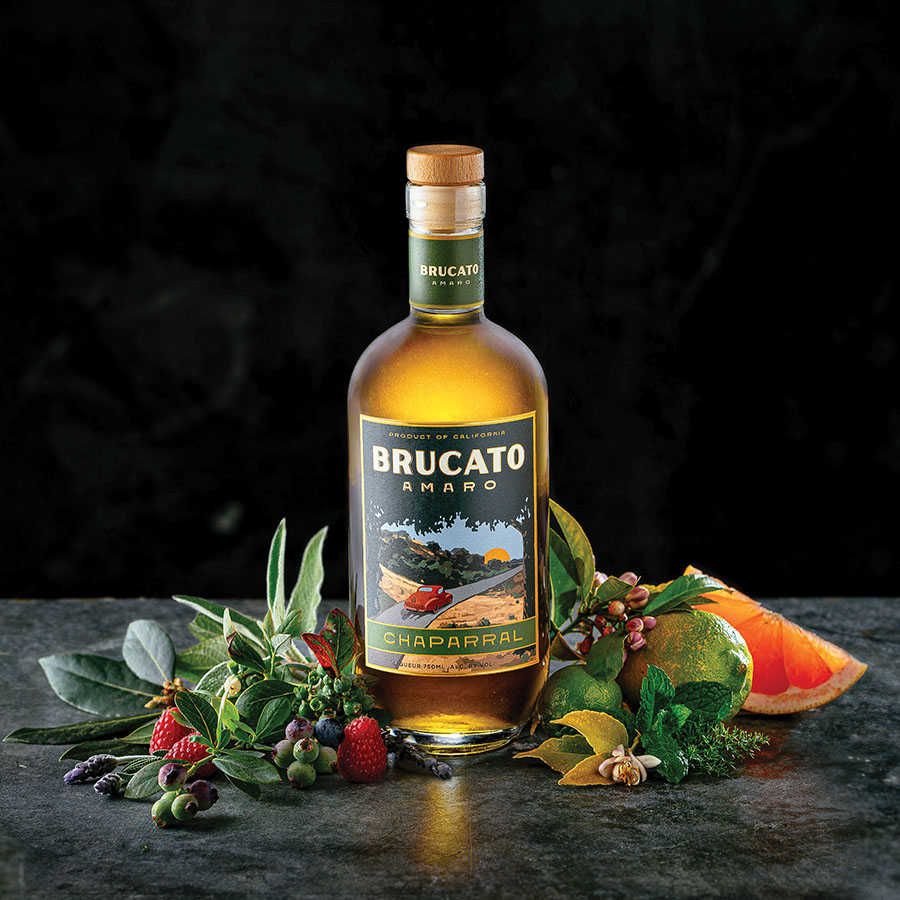
Inspired by a recipe in a journal documenting Californian medicinal elixirs, the primary ingredient in Chaparral is yerba santa, which, like the ingredients in the original European bitters, was also used medicinally by native peoples and Spanish missionaries. It is made with neutral California brandy diluted to 75% ABV and then infused in 500-liter stainless steel tanks. Sierra Clark says that they “layer in the ingredients, which are essentially big tea bags. The largest go in first. Some sit for months.” Other botanicals include fresh spearmint, anise, tarragon, bay laurel, green cardamom, green coriander, fresh Meyer lemon peel, and many others. After pressing, Chaparral is aged on oak cubes with some special editions aged in used American whiskey barrels. After that, it is gravity filtered, cut with house-made simple syrup, and gravity filtered again.
Bringing Italian Tradition to Oregon
Andrea Loreto’s Ver comes from an entirely different environment. He makes it in Eugene, Oregon, under his Elixir Craft Spirits label. Loreto started making liqueurs 15 years ago after bringing his grandmother’s cookbook back from Italy and finding recipes for liqueurs in the appendix. He started tinkering for fun, finding that some recipes “were horrible, but some were great,” and that pushed him into creating an honest-to-god business.

Ver is brilliantly green, a factor that was critical to Loreto, who says it took three years of work to figure out how to stabilize the color. “I didn’t really want to copy Chartreuse,” says Loreto, “but it sort of happened because I was trying to put together a good herbal liqueur that was naturally green.” He’d grown up with it as a youth in Italy, so that flavor was always there as a reference.
Loreto uses a two-step process to make Ver, starting with an infusion of alcohol, water, and botanicals to “extract the flavors, scents, and color. Then we mix it with alcohol and water.” Loreto says he prefers to buy local botanicals because they’re fresher — “the fresher they are, the better” — but some are available only in Italy.
Brooklyn Basement Mixologist
Patrick Miller came to the amari world as a chef focused on balanced flavors. He says that “as a lifelong cook, that balance of salt, texture, is everything.” He got his start in the bitters business tasting what was on the market in 2015. “People were freaking out,” Miller says, “and I thought, ‘these are fine, but …” So he started a business that would become Faccia Brutto Spirits, which means “ugly face” in Italian. All of its bottles feature an illustration of the brutish mug of a man swigging an amaro, and each of its seven products reflects one of the many Italian amaro traditions. Centerbe (“100 herbs” in Italian) is the closest to Chartreuse.
Unlike Chartreuse’s much-vaunted secret recipe, Miller is extremely transparent about how he makes Faccia Brutto and even gave me a list of his ingredients. Like all of his American contemporaries, he learned by doing, tinkering away for a year and half on his days off before he arrived at the first version of Faccia Brutto. His formula starts with a 12-day, 190-proof, cold maceration with dried herbs. On the eleventh day, he adds fresh herbs, which sit for one day before proofing down to 48% ABV and sweetening with cane sugar, which “activates pectins, which allow us to filter out every single particle.” He proofs it down to 45% for bottling, and, casting back to his background as a chef, he adds salt to keep everything in balance.
Bar-Ready in Portland
Portland’s Straightaway Cocktails has a full line of bar-ready amari and liqueurs called Accompani. Founders Casey Richwine and Cy Caine started batching cocktails for friends as a side project. Those private batches led to enough orders that they were able to quit their jobs and focus exclusively on the distilling and RTD cocktail business. Along the way they ran into a sourcing issue: They weren’t able to consistently get all the modifiers they needed at the right quality or sweetness levels for their cocktails. That led Richwine and Caine to create their own ingredients tailor-made for the cocktails they wanted to make.
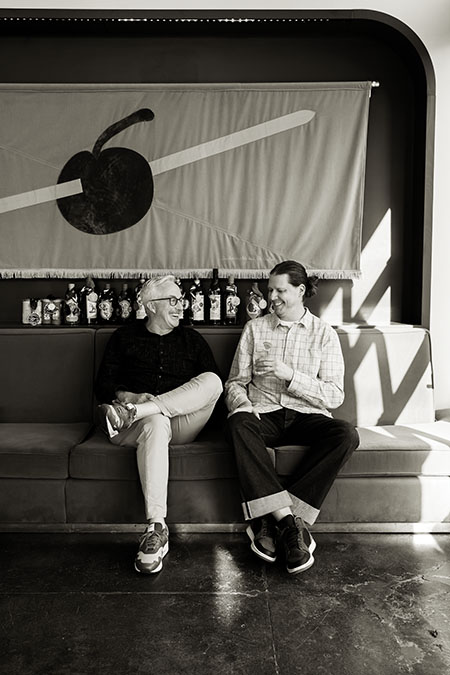
Their Chartreuse variant is Flora Green, which highlights hyssop, spearmint, lemon balm, chamomile, lavender, angelica root, and tarragon. Nora Furst, a Straightaway brand representative and longtime fixture in San Francisco’s bar scene, says the practical aspect of Flora Green is what resonates most. She noted that many spirits and liqueurs are released without an obvious bar application, while Straightaway is “really coming from a place of ‘this is a bartender’s tool kit and these are tools they already need.’”
A Domestic Backbar
While no domestic product is a true clone of Chartreuse — the recipe is famously well-guarded, known only by three monks and “protected by vows of silence” — more Chartreuse variants will help create more regional cocktail stories. Furst says Flora Green gives her and other bartenders the “opportunity to look at cocktail recipes that have been in our back pockets all along” with fresh eyes. Because the sugar and ABV of Flora Green are lower than Chartreuse, it lends itself well to adaptations and riffs, but doesn’t always act just like Chartreuse behind the bar. “Flora Green and watermelon is one of the best things out there,” says Furst. “That would have never occurred to me with Chartreuse.”
Loreto thinks that Ver is “a great substitute for Chartreuse in cocktails. It’s probably even better if you like to drink it straight because it’s lighter, 50% not 55% ABV, and less cloying.” Clark says she was surprised by a bartender’s version of a mezcal Last Word using the Brucato Chaparral which was “extraordinary,” she says. “And I like Chartreuse a lot!”
The fact that so many of these American bitters were created with an eye to contemporary cocktail culture is a huge point of interest for distillers and bar managers alike. Bars could now conceivably source a backbar of bitters solely from American creators. Miller says that since the stories about Chartreuse have been circulating, “All I’ve been making is Centerbe and all my distributor is buying is Centerbe.” Faccia Brutto is even launching a new expression, Centerbe Giallo, which is similar to Yellow Chartreuse.
Still, don’t schedule a funeral for Chartreuse — it’s not going away. As Einbund says, “There is only one Chartreuse. I receive emails on a regular basis of folks attempting or wanting to attempt their own version, and I’m totally supportive of that — not because they are going to create Chartreuse, but because they are going to explore and experiment and hopefully make another delicious beverage for us all to enjoy. To rip from The Highlander, ‘There can be only one!’”


